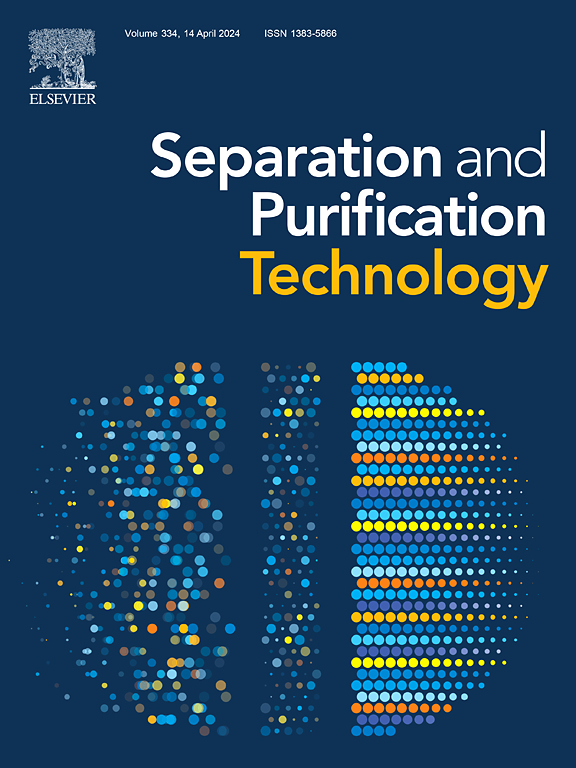Ion-island induced spatially separated active sites in poly(ionic liquid)s for efficient CO2 fixation into cyclic carbonates
IF 8.1
1区 工程技术
Q1 ENGINEERING, CHEMICAL
引用次数: 0
Abstract
Carbon dioxide (CO2) conversion into carbonates via cycloaddition with epoxides represents a promising approach for achieving carbon neutrality and advancing clean energy technologies. However, it remains challenging to design efficient heterogeneous catalysts that achieve high catalytic activity comparable to homogeneous components with minimal dosage under mild conditions. From the perspective of maintaining intrinsic activity while realizing sufficient exposure of active sites, this work presents a new strategy to construct efficient heterogeneous catalysts based on ion-island induced spatially separated active sites in hyper cross-linked poly(ionic liquid)s (HPILs). By optimizing the Friedel-Crafts alkylation and ionization in specific directions, we synthesized a series of HPILs featuring ion-island architectures with spatially separated active sites. Intriguingly, it was discovered that the electron-withdrawing ionic liquids induced unidirectional polymerization into ion-islands, and the electron-rich triphenylphosphine (PPh3) tended to cross-link multidirectional forming networks, which co-regulated the distributions of ion-islands and therein inter-ion interaction. Remarkably, HPIL-3 with peripherally distributed ion-islands demonstrated exceptional catalytic efficiency (TOF = 1451.1 h−1) for CO2 and propylene oxide (PO) at 90 °C with 0.05 mol% Br- (relative to PO). Combining EPS and in-situ DRIFTS analysis revealed that the quaternary phosphine cations (P+) and Br- synergistically activated both CO2 and PO molecules, thereby accelerating the cycloaddition process.


求助全文
约1分钟内获得全文
求助全文
来源期刊

Separation and Purification Technology
工程技术-工程:化工
CiteScore
14.00
自引率
12.80%
发文量
2347
审稿时长
43 days
期刊介绍:
Separation and Purification Technology is a premier journal committed to sharing innovative methods for separation and purification in chemical and environmental engineering, encompassing both homogeneous solutions and heterogeneous mixtures. Our scope includes the separation and/or purification of liquids, vapors, and gases, as well as carbon capture and separation techniques. However, it's important to note that methods solely intended for analytical purposes are not within the scope of the journal. Additionally, disciplines such as soil science, polymer science, and metallurgy fall outside the purview of Separation and Purification Technology. Join us in advancing the field of separation and purification methods for sustainable solutions in chemical and environmental engineering.
 求助内容:
求助内容: 应助结果提醒方式:
应助结果提醒方式:


